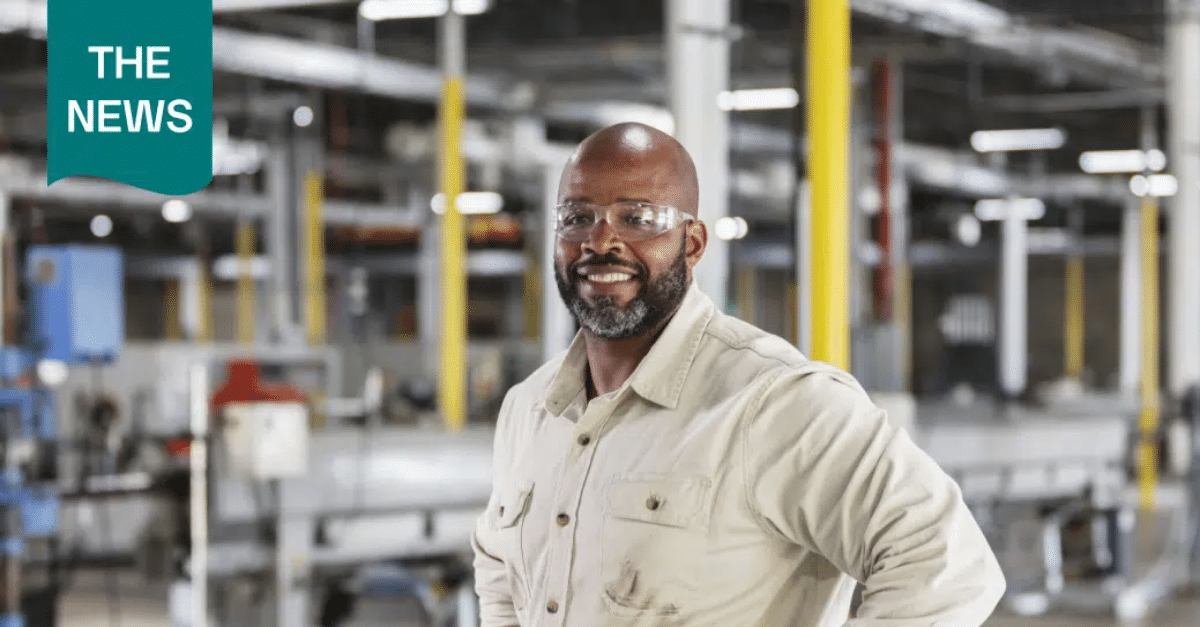
We’re always after that sweet spot when everything is running at maximum efficiency – whether it be for a pump, a human, a supply chain, or a full ecosystem. But since sweet spots can still get out of balance and shift, we must remain vigilant… Read all about it in our regular round-up of manufacturing-related news.
Life is a balancing act as we try to get the most out of both our personal and professional lives. And there are other famous balancing acts: between regulation and unfettered innovation, between production and cost, between machine and process, etcetera.
And why settle on “blue collar” or “white collar” when you can surf in between (‘Wanted: “New Collar” Workers’). And why offshore or reshore when you can nearshore (‘Mexico’s Rising Exports to U.S. Reflect Nearshoring Momentum’)?
Goldilocks AI: Copilot Vs Autopilot
In terms of AI, we are still largely looking for the sweet spot between autopilot and copilot.
“On June 1, 2009, Air France Flight 447 vanished on a routine transatlantic flight. The circumstances were mysterious until the black box flight recorder was recovered nearly two years later, and the awful truth became apparent: three highly trained pilots had crashed a fully functional aircraft into the ocean, killing all 288 people on board, because they had become confused by what their Airbus 330’s automated systems had been telling them,” according to ‘Of Top-Notch Algorithms And Zoned-Out Humans’.
“Paradoxically, there is a risk to building a plane that protects pilots so assiduously from error. It means that when a challenge does occur, the pilots will have very little experience to draw on as they try to meet that challenge.”
A recent experiment showed how job recruiters do better when using subpar algorithms. “The simple reason is that when recruiters were offered guidance from an algorithm that was known to be patchy, they stayed focused and added their own judgment and expertise. When recruiters were offered guidance from an algorithm they knew to be excellent, they sat back and let the computer make the decisions.”
In other words: “A low-grade algorithm and a switched-on human make better decisions together than a top-notch algorithm with a zoned-out human. And when the algorithm is top-notch, a zoned-out human turns out to be what you get.”
The Most Sophisticated Juggling Act Ever
Then, there are all the juggling acts behind the technologies required to make AI happen.
For example, there’s ASML, the Dutch maker of chipmaking tools, that makes possibly the “most sophisticated equipment ever sold commercially,” according to ‘Europe At Last Has An Answer To Silicon Valley’.
‘The firm holds a monopoly on a key link in the world’s most critical supply chain: without its kit, it is next to impossible to make cutting-edge computer processors, such as those that go into smartphones and data centers where artificial intelligence (AI) is trained.”
“Yet ASML’s spectacular success is also underpinned by two other, less obvious factors. The company has created a network of suppliers and technology partners that may be the closest thing Europe has to Silicon Valley. And its business model ingeniously combines hardware with software and data.”
“It all works because ASML has cultivated a culture of trust and transparency while preserving elements of competition. Suppliers are not squeezed to the last penny. Quite the opposite: ‘We need them to stay healthy,’ says Mr Allan. Information flows freely throughout the network […] Engineering teams from different firms work together, patents are shared, as is some financial data and, sometimes, profits.”
Ultimately, the laws of physics might slow the company – after all “you can’t shrink transistors forever.”
“But for now, though, the company’s network and its network effects remain indomitable.”
Humans Always Want A Sweeter Spot
While ASML’s achievements are impressive, humans generally seem rather bad at finding the right balance.
“In the 1990s, when multicolor LED lights were invented by Japanese scientists after decades of research, the hope was that they would help to avert climate catastrophe by greatly reducing the amount of electricity we use. It seemed perfectly intuitive. After all, LED lights use 90 percent less energy and last around 18 times longer than incandescent bulbs,” according to ‘The Paradox Holding Back the Clean Energy Revolution’.
But instead of saving the world, LEDs just meant Vegas could get yet glitzier and became an even more significant “symbol of the coming collision between our climate goals and our seemingly insatiable appetite for stuff.”
In other words, as tech advances, we only grow more wasteful. “There’s an economic term for this: the Jevons Paradox, named for the 19th-century English economist William Stanley Jevons, who noticed that as steam engines became ever more efficient, Britain’s appetite for coal increased rather than decreased.”
“Today, you can see examples of the paradox everywhere. The servers running the internet have become less power-hungry but our use of them has skyrocketed. Refrigerators have become astoundingly efficient in recent years (thanks mostly to clever compressors) — so much so that total energy consumption from refrigeration has halved since the early 1980s, even as consumers installed ever bigger coolers. Yet those clever, efficient compressors are also used in air-conditioning, and energy demand from air-conditioning in homes, cars, offices and server farms has ratcheted up over that period. The upshot is that total energy consumption for cooling, more broadly defined, stayed flat.”
“The good news is that in some cases the efficiency gains are so great that even our insatiable appetite for new stuff cannot completely negate them. LEDs are improving at such a rate, commercial lighting demand in the United States remains lower than it was a decade ago.”
So now, the ultimate sweet spot to aim for is to fight the Jevon Paradox with the Jevon Paradox. “We can do that by improving the production of renewables, from solar panels and wind turbines to batteries, so they become genuinely price competitive with the dirty stuff, including natural gas.” “Somewhere out there – maybe at a university in the United States, Japan or, more likely, China – someone is working on the semiconductor technology that could make solar panels or carbon capture far more efficient than it now is. Like the scientists who invented the LED after years of false starts, eventually they will succeed. In them lies our best hope of defeating the Jevons Paradox, and eliminating our emissions altogether.”
So, let’s get back on the tightrope and get to work.
Read ‘Manufacturing – The News: Black History Month‘ or reach out!






